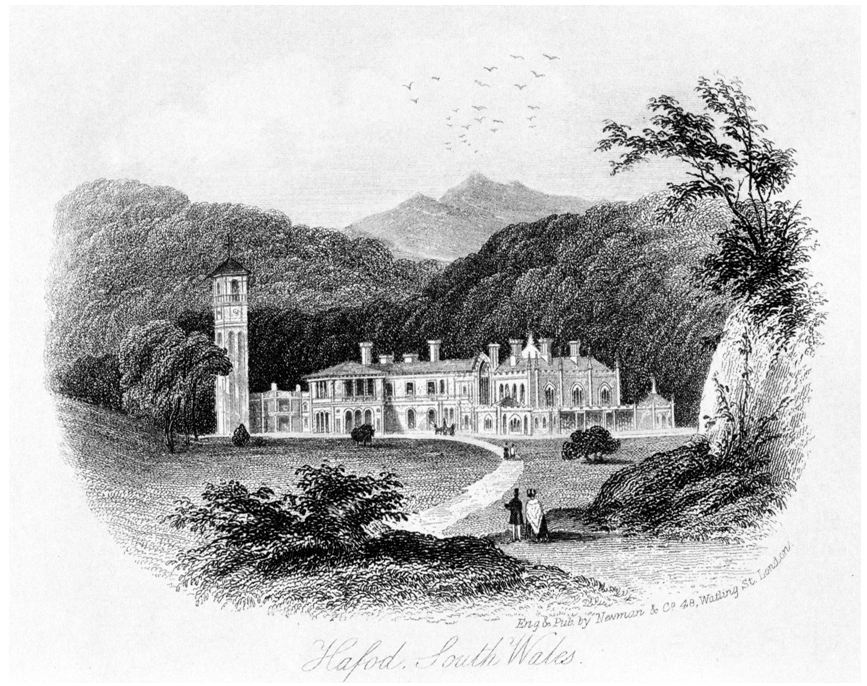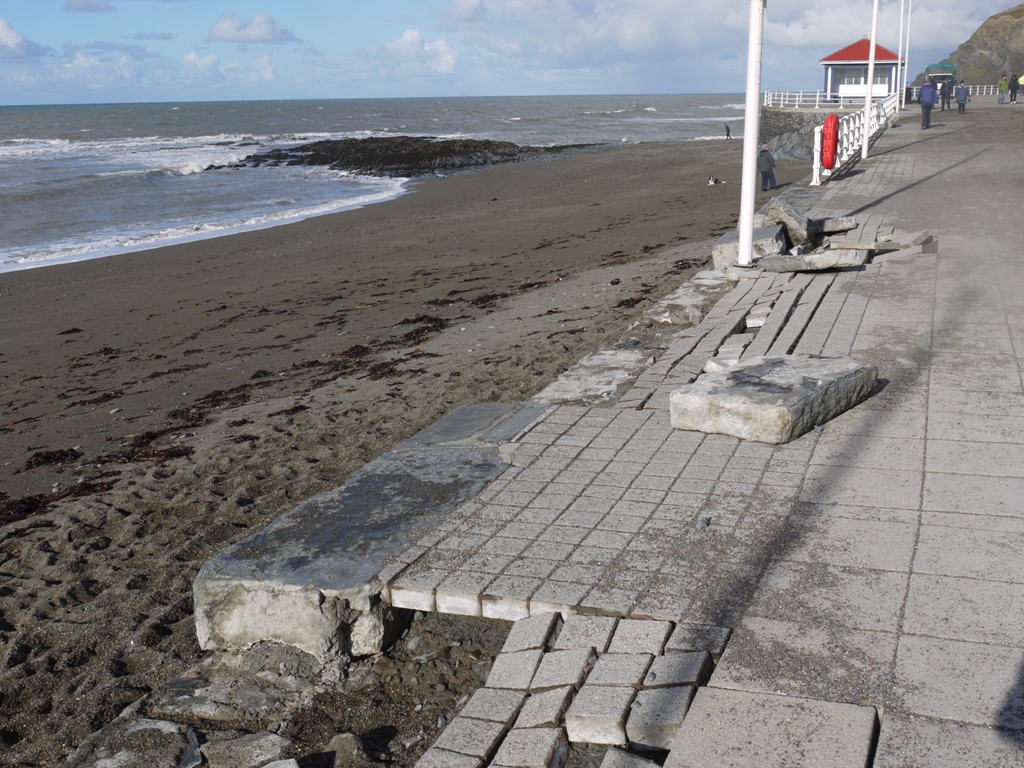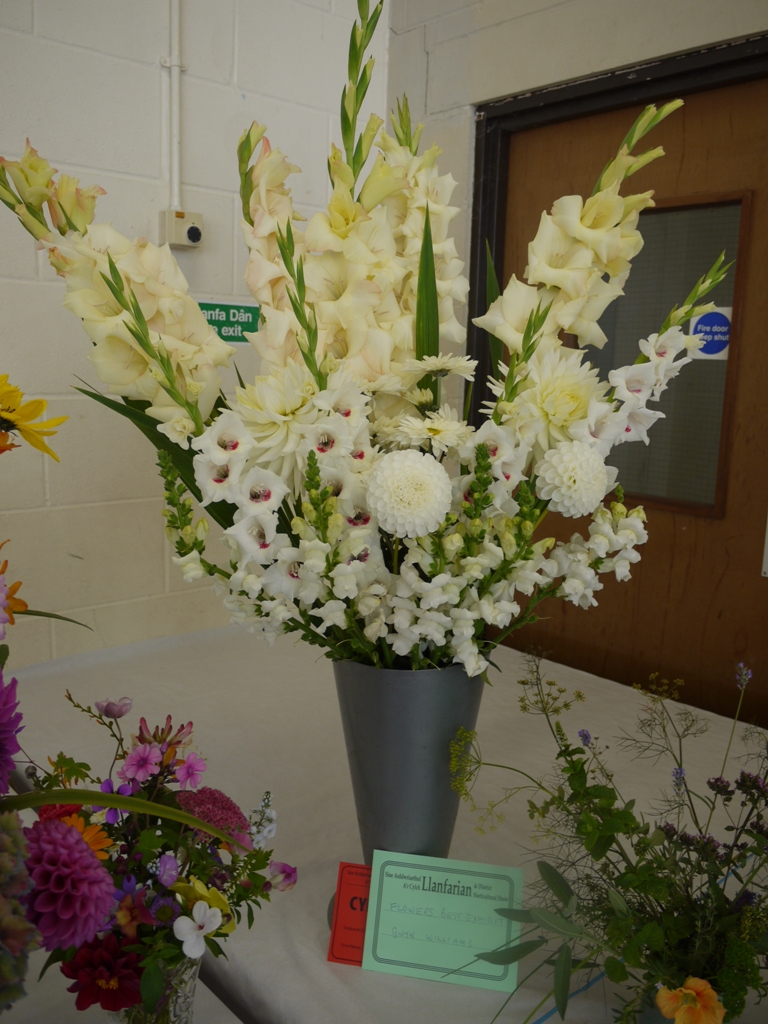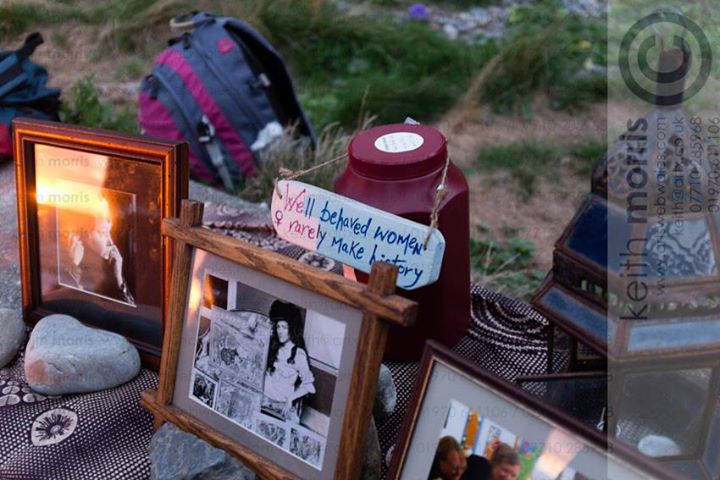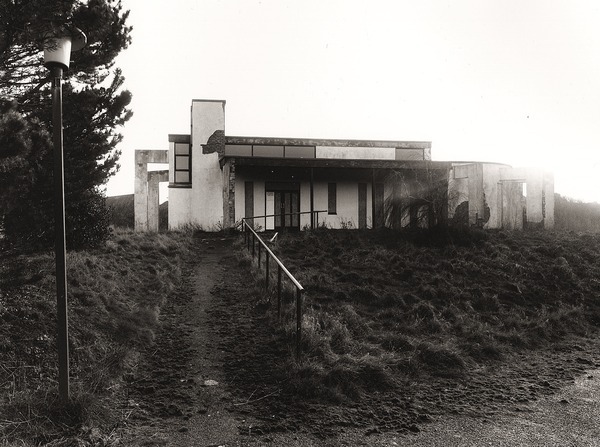by The Curious Scribbler
Last week Jennie Macve addressed the Aberystwyth Bibliographical Group on the subject of Hafod. Her lecture, entitled Deeds and Dinner Plates – Some Primary Sources, introduced the audience to a variety of lesser-known resources which throw light on Hafod’s past. Deeds dating right back to Thomas Johnes’s ownership came to light a few years ago, most unexpectedly, in a solicitors’ office in Leeds, and are now in the care of the Ceredigion County Archive. Other sources include sketches, pictures, and photographs, which trickle in from all sorts of serendipitous sources, – Ebay produced one of a pair of glass plate stereo photographs which shows the Italianate wing added by Sir Henry De Hoghton, from the perspective of the present back drive leading to the estate office in the stables. Another collector has a Victorian souvenir Prattware plate, on which a well-known steel engraving of Hafod circa 1850 is reproduced.
A much earlier and more sophisticated source is the Hafod Service, a dessert service commissioned from the Derby Pottery in 1788. Thomas Johnes had it made as a gift for the then Lord Chancellor Lord Thurlow. We can only speculate as to what favour or preferment Thomas Johnes was hoping for in return. It consisted of 45 pieces, two dozen plates and assorted bowls and dishes, each decorated with a view of Hafod. The pictures were painted in colour by the artists at the factory working from the sketches and paintings by artist Thomas Jones of Pencerrig and other contemporary images. The originals are for the most past lost, consumed, perhaps, in the great fire at Hafod in 1807, so these valuable collectors’ plates are a vital historic resource.
As the immaculately decorated plates turn up, in museums or other collections they throw light on previously unknown views from the late 18th century. Seventeen items from the service are in the National Museum at Cardiff, and another ten are known in other museums or collections. The most recent to come to light, in a provincial auction house last year, seems to show a scene on the river upstream from Pontrhydygroes. Two particularly useful dishes show the lodges at either end of the approaches to the house, both of which were subsequently demolished by the Duke of Newcastle to make way for 19th century structures. These original lodges were built to signal the diversion of the public road, (which formerly ran past Hafod) to its present route (the B4574) along a sinuous lane past Cae Meirch. Archways over the old road down the valley clearly signalled that this was now private property.
It is interesting to reflect that in the last decades of the eighteenth century landowners in Ceredigion were all busily diverting roads in order to improve their properties. We see the same pattern at Nanteos and at Llanerchaeron where the owners, all influential men, each purchased the old road past their mansion from the Trustees of the Turnpike Trusts on which they served, and thus ensured that the common drovers no longer passed their doors. Designed lodge houses served to emphasise the entrances to what was now private land. Estate improvement also often involved relocating the odd tenant farm to improve the flow of the landscape of the demesne. Some of the old maps reveal that Johnes too, though in many ways an enlightened landlord, removed farms and cottages which he considered inharmonious in the view.
The gentle watercolours and sketches of two hundred years ago are charmingly familiar, so similar to the views which can be seen today. But as Jennie pointed out, too many of us forget that the historic footpaths through the picturesque landscape have been hard won, through the last twenty years of restoration. Before the present concerted efforts by The Hafod Trust in partnership with the Forestry Commission these paths were impassable, blocked and in places broken by fallen trees, eroded by hillside torrents where culverts had become blocked, or entirely obliterated by landslip. When a path is clear of obstruction we take it for granted, and imagine it was always thus. Hafod is in fact a fine example of unobtrusive restoration.
Hafod is open to the public at all times. For more information see www.hafod.org/
Aberystwyth Bibiographical Group see http://users.aber.ac.uk/das/texts/aberbibgr1.htm

